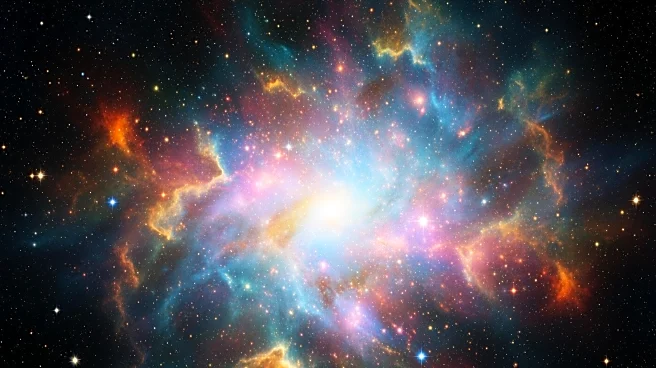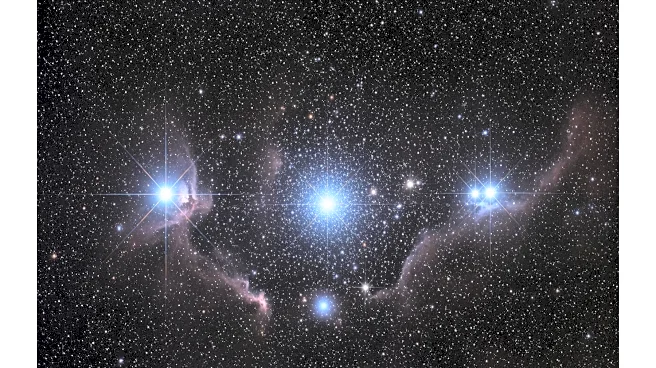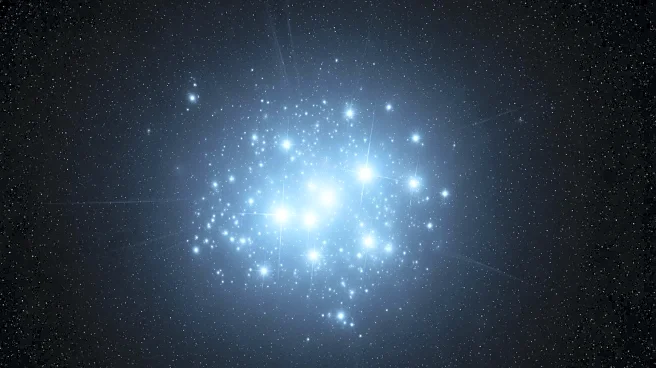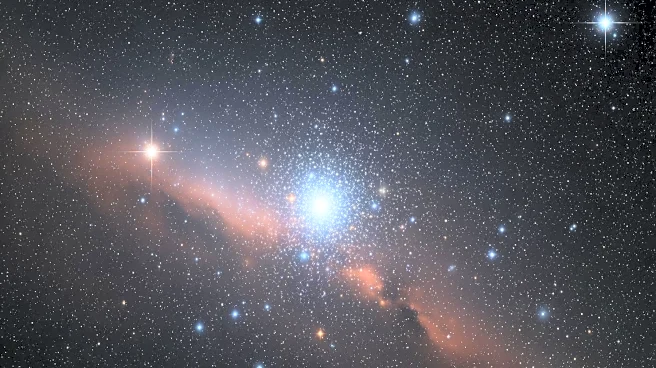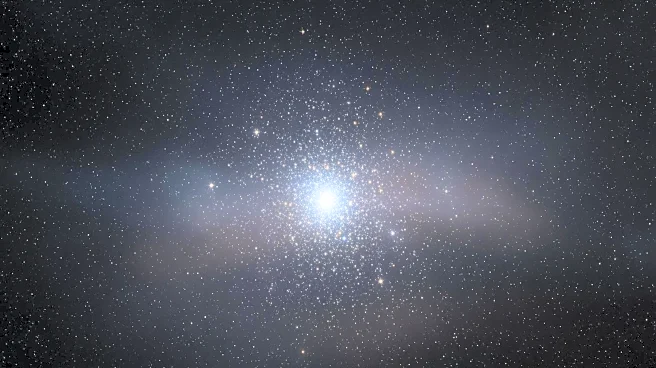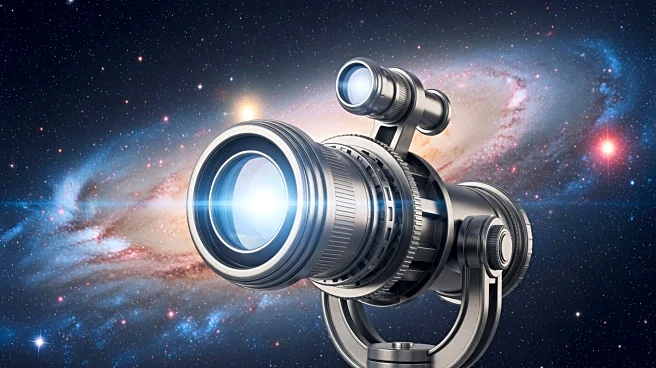What's Happening?
Astronomers have revealed that the Pleiades constellation, traditionally known as a cluster of seven stars, is actually part of a much larger stellar association. Using data from the European Space Agency's Gaia and NASA's Tess satellites, researchers
have identified thousands of additional 'sibling' stars, expanding the constellation's size by 20 times. This discovery redefines the Pleiades as the core of a vast structure called the Greater Pleiades Complex, which spans at least 600 parsecs. The study also uncovered 'stellar bridges' connecting the Pleiades with other young star clusters, offering new insights into the cosmic neighborhood.
Why It's Important?
This discovery has significant implications for astronomy, as it provides a new framework for understanding the origins and connections of stars within our galaxy. By identifying the Greater Pleiades Complex, astronomers can better map the cosmic neighborhood and explore the hidden architecture of the galaxy. The findings may also lead to a reevaluation of other star clusters, potentially uncovering more extensive stellar families. This research enhances our understanding of the galaxy's structure and the processes that govern star formation and evolution.
Beyond the Headlines
The cultural and historical significance of the Pleiades constellation is profound, as it is featured in various traditions and symbols worldwide. This study not only changes the scientific perspective of the constellation but also enriches its cultural narrative by revealing its vastness and complexity. The research opens new avenues for exploring the origins of stars, including our Sun, and understanding the interconnectedness of stellar families across the galaxy.


